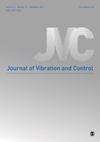HMDM: A hybrid GM model-based and MHSA-GRU data-driven method for remaining useful life prediction of rolling bearings
IF 2.4
3区 工程技术
Q2 ACOUSTICS
引用次数: 0
Abstract
Rolling bearings have been extensively used to reduce friction and restrain relative movement between moving parts. However, failures such as wear or fatigue can be caused under continuous operating conditions, which results in extreme economic losses and severe injuries. The failure rate of rolling bearings can be reduced by the remaining useful life prediction, which can perform effective predictive maintenance to reduce the risk of bearing failures and improve reliability. Machine learning (ML) has inaugurated new approaches to implement RUL prediction of rolling bearings, which is essential to the machinery prognostic and health management (PHM) system. Unfortunately, many existing ML, particularly supervised learning methods, have the following drawbacks. On the one hand, the independent identically distributed law between the training data and test data is always difficult to satisfy, which will induce poor generalization and unsatisfactory prediction results. The amount of degradation data and the corresponding labels are increased with the degenerative process, which costs a lot of time and effort for label setting. On the other hand, most of them are incompetent for the task of RUL estimation with insufficient degradation information and the prediction accuracy is often affected by noise. To deal with the above issues, a hybrid model-based and data-driven model (HMDM) architecture that combines the grey model (GM) and gated recurrent unit (GRU) with multi-head self-attention (MHSA) is proposed. The raw failure signal of the rolling bearing is preprocessed by the singular value decomposition (SVD) method for noise reduction. A novel model learning method is applied to train models, which compensates for deficiencies of prediction errors caused by distribution differences between training data and testing data, as well as avoiding the problem of sample labeling to ease the economic burden and labor waste. The characteristics of the GM and MHSA-GRU are inherited by HMDM, which has excellent prognostic capacity at a variety of time sequence lengths and degradation information with different frequency changes. The prediction of the proposed model is verified by the experimental data from the PRONOSTIA platform and XJTU bearing dataset, and a comparison with other methods is conducted to reveal the merit of HMDM on the performance of RUL prediction. The results show that high prediction accuracy of time series with different lengths and frequency changes can be achieved by the proposed HMDM model, which outperforms the existing ML methods and provides a new solution for RUL prognostics of rolling bearings.HMDM:基于 GM 模型和 MHSA-GRU 数据驱动的混合方法,用于滚动轴承剩余使用寿命预测
滚动轴承被广泛用于减少摩擦和抑制运动部件之间的相对运动。然而,在连续运行条件下会出现磨损或疲劳等故障,从而造成极大的经济损失和严重的人员伤亡。通过剩余使用寿命预测可以降低滚动轴承的故障率,从而进行有效的预测性维护,降低轴承故障风险,提高可靠性。机器学习(ML)为实现滚动轴承的剩余使用寿命预测提供了新方法,这对机械预报和健康管理系统(PHM)至关重要。遗憾的是,许多现有的 ML(尤其是监督学习方法)都存在以下缺点。一方面,训练数据和测试数据之间的独立同分布规律总是难以满足,这将导致泛化效果差,预测结果不理想。随着退化过程的进行,退化数据量和相应的标签也会增加,这就需要花费大量的时间和精力来设置标签。另一方面,在退化信息不足的情况下,大多数算法都无法胜任 RUL 估计任务,而且预测精度往往会受到噪声的影响。针对上述问题,我们提出了一种基于模型和数据驱动的混合模型(HMDM)架构,该架构将灰色模型(GM)和门控递归单元(GRU)与多头自关注(MHSA)相结合。采用奇异值分解(SVD)方法对滚动轴承的原始故障信号进行预处理,以降低噪声。采用新颖的模型学习方法训练模型,弥补了因训练数据和测试数据的分布差异而导致的预测误差缺陷,同时避免了样本标注问题,减轻了经济负担和人力浪费。HMDM 继承了 GM 和 MHSA-GRU 的特点,在各种时序长度和不同频率变化的退化信息下都具有出色的预报能力。通过 PRONOSTIA 平台和 XJTU 轴承数据集的实验数据验证了所提模型的预测结果,并与其他方法进行了比较,以揭示 HMDM 在 RUL 预测性能方面的优势。结果表明,所提出的 HMDM 模型可以对不同长度和频率变化的时间序列实现较高的预测精度,优于现有的 ML 方法,为滚动轴承的 RUL 预报提供了一种新的解决方案。
本文章由计算机程序翻译,如有差异,请以英文原文为准。
求助全文
约1分钟内获得全文
求助全文
来源期刊

Journal of Vibration and Control
工程技术-工程:机械
CiteScore
5.20
自引率
17.90%
发文量
336
审稿时长
6 months
期刊介绍:
The Journal of Vibration and Control is a peer-reviewed journal of analytical, computational and experimental studies of vibration phenomena and their control. The scope encompasses all linear and nonlinear vibration phenomena and covers topics such as: vibration and control of structures and machinery, signal analysis, aeroelasticity, neural networks, structural control and acoustics, noise and noise control, waves in solids and fluids and shock waves.
 求助内容:
求助内容: 应助结果提醒方式:
应助结果提醒方式:


